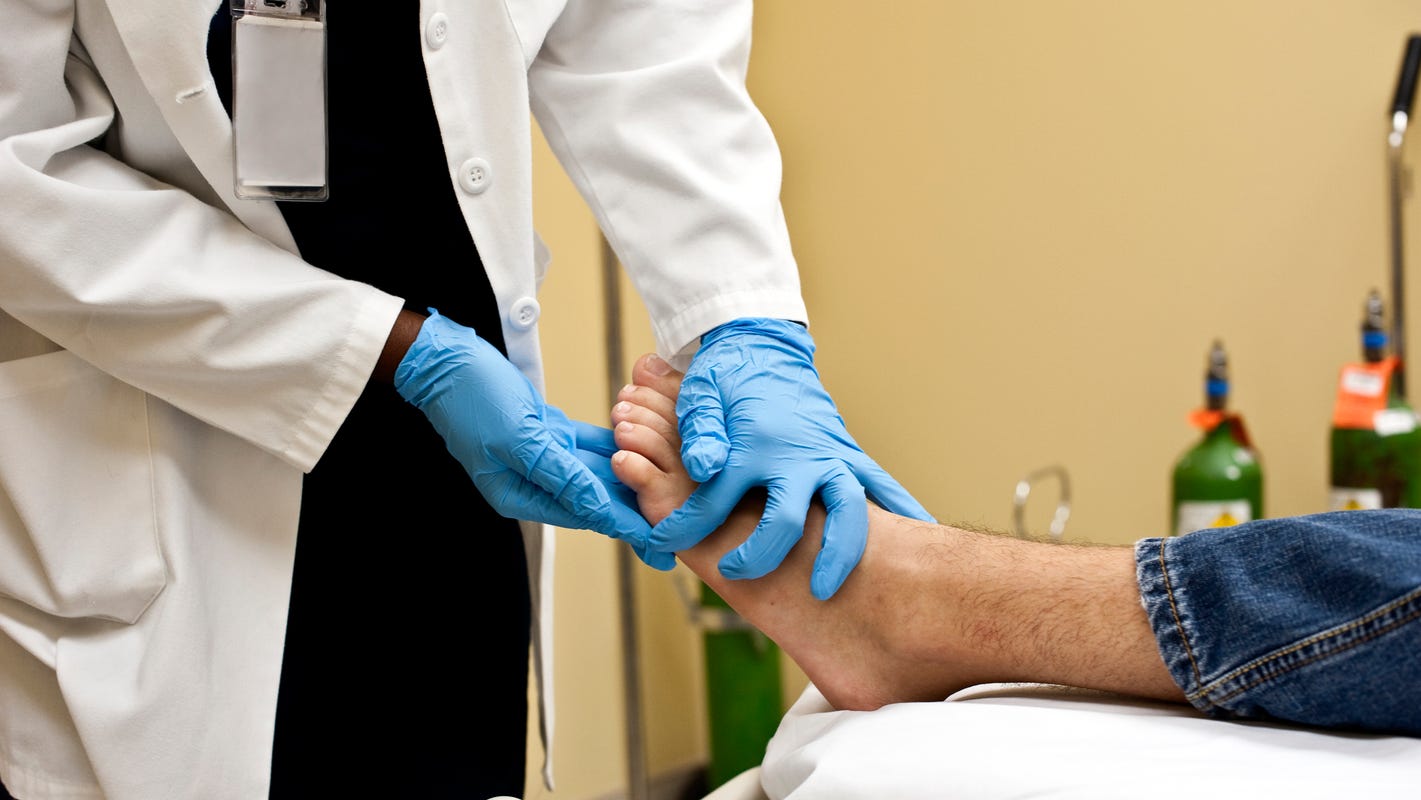CLOSE
The CDC released six new possible symptoms of coronavirus, which include muscle pain and headache.
USA TODAY
Doctors are learning more about COVID-19’s newest and oddest skin manifestation, dubbed COVID toes, as the Centers for Disease Control and Prevention adds to the growing list of symptoms associated with the coronavirus.
The American Academy of Dermatology has compiled a registry of skin manifestations associated with COVID-19. About half of the more than 300 total cases on the dermatological registry consist of COVID toes.
The registry is made up of entries by physicians and other health care professionals who fill out a 5-7 minutes survey about patients with confirmed or suspected COVID-19 who develop skin manifestations, as well as patients with existing dermatological conditions who develop COVID-19 and patients on dermatological medications who developed COVID-19. Entries can not be made by patients themselves.
Dr. Esther Freeman, director of Massachusetts General Hospital Global Health Dermatology and member of the AAD task force on COVID-19, said COVID toes are pinkish-reddish “pernio-like lesions” that can turn purple over time.
She said this shouldn’t be confused with a different medical condition that occurs in critically sick patients called purpura fulminans.
When she first started the registry with the academy, she was expecting to see viral rashes often driven by inflammation.
“What was more surprising to me was this overwhelming representation of these ‘COVID toes,’” she said.
CLOSE
The secret to fighting COVID-19 could be in recovered patients. Here’s how antibodies could lead to a treatment for those fighting coronavirus.
USA TODAY
Where can I get a COVID-19 antibody test? And is it reliable? Here’s everything you need to know.
Pernio, also called chilblains, are skin sores or bumps that occur on a patient’s feet when they’re exposed to cold temperatures. The reason why Freeman calls the new symptom “pernio-like” is because she believes COVID toe lesions aren’t a result of cold temperatures.
While experts can’t confirm why COVID toes appear, they have some educated guesses. One could be inflammation in the toes’ tissue, which is similar to pernio. Another hypothesis is inflammation of the blood vessel wall, medically known as vasculitis. And finally, Freeman said it is possible COVID toes could be caused by small blood clots that form inside the blood vessel.
Doctors at the American Academy of Dermatology have discovered trends studying the registry that weren’t previously known about COVID toes. Freeman says COVID toes have appeared in very few cases of asymptomatic patients. The majority of COVID toe cases have manifested simultaneously or even after more commonly known COVID-19 symptoms.
Freeman said most patients test positive for the COVID test when they develop COVID toes, which allows experts to assume that the symptom may appear later in the infection.
“The timing is complex and difficult to pin down,” she said.
What we know about coronavirus keeps changing: Here’s all the things you may have missed.
Hydroxychloroquine: States build stockpiles of the malaria drug touted by Trump to treat coronavirus
The majority of COVID toe patients in the registry are younger people in their 20s and 30s, Freeman said, and doctors haven’t seen a lot cases reported from older people. She also said most patients with COVID toes are healthy and “have done well in their clinical course.”
“I think it’s important not to induce panic if you were to develop these lesions on your toes,” she said. “Most of our patients seem to be doing well.”
Freeman recommends patients speak to their health care provider if they develop these lesions to assess if they are caused by a different medical condition, or any other reason.
“But if there isn’t, then they should talk about COVID testing or isolate or consider other ways to reduce the spread,” she said.
Follow Adrianna Rodriguez on Twitter: @AdriannaUSAT.
Autoplay
Show Thumbnails
Show Captions
Read or Share this story: https://www.usatoday.com/story/news/health/2020/04/27/coronavirus-doctors-learn-more-new-covid-19-symptom-covid-toes/3031743001/
